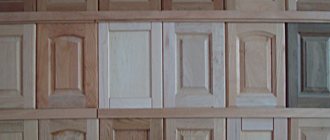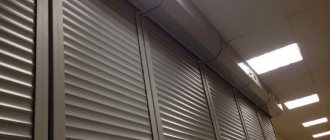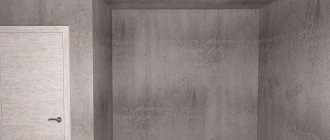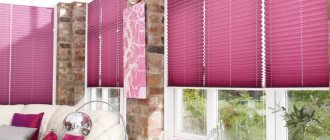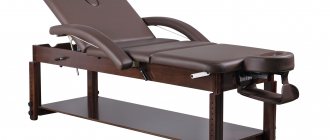Material for making gates
When constructing a fence on the territory of a dacha, you need to think in advance about what the entrance will be like. Solving this issue will help make your fence a single composition, made in the same style.
You can provide a free-standing gate, and also design its location next to the car gate. Often, home owners equip a complicated structure - a gate with a wicket built into it.
A variety of materials can be used for manufacturing. There is the possibility of combining and decorating them. The most common solutions are:
- installing a profile pipe covered with chain-link mesh is a simple, but not very original and aesthetically attractive way of arrangement;
- construction of a durable metal frame covered with durable corrugated sheets with possible decoration with additional decor;
- elegant wood construction;
- a prestigious forged gate, which not only has a long service life, but also has a unique appearance;
- combination of different materials.
You can see the appearance of such products, advantages and disadvantages in the photos of the gates presented. There are many options for arrangement; each summer resident makes a decision based on his own wishes and style of design of the country landscape.
Drawings of sliding gates made of corrugated sheets
The most optimal option for a sliding fence, which you can build on your own, is a design with a guide rail. It is enough to simply select kits of fittings and automation systems. The gate includes a retractable leaf with a bottom rail that moves on a special roller system. In order for the structure to be balanced when closed, an additional triangular console is welded to the side of the frame.
As you can see, the gate frame consists of a frame and a console, which are made of a thicker profile pipe (60x40). It is also better to make the internal elements of the console from this pipe. Inside the gate frame, the frame design can be made in different versions (with rectangles or triangles. The main thing is that the pipe is a lighter pipe (for example, 40x20). Also, do not make the grille too thick. The procedure for installing a sliding fence is presented in the following video:
We hope that the following drawings will help you make your own gates and wickets from corrugated sheets that will be comfortable, reliable and durable.
Structural design
The door leading to the private courtyard can open in any direction. However, it is recommended to design it in such a way that it still opens inward. This way you don’t have to think about the possibility of injury to a guest or just a passerby. Especially if the fence is located close to the roadway or pedestrian path.
To ensure the protection of the house and the safety of residents, the hinges must be covered without fail. In this case, you need to securely fasten the lock to the gate.
The size should be as convenient as possible both for a person passing by and for people carrying, for example, pieces of furniture or building materials. That is why it is recommended to design the width of the structure at least 750-1000 mm. There is no need to take pillars into account. But the height of the door should be approximately 1.8-2 m.
But you should take into account the features and dimensions of the fence itself so that the composition looks as natural as possible. Many novice craftsmen make mistakes and make calculations based on fastening the canvas to the posts closely. This is not true. There should be a gap between them:
- from hinges 6 mm;
- in the direction from the ground not less than 8 mm;
- on other sides more than 2 mm.
Lock installation
Example of an installed lock
The last step is installing the lock. As mentioned earlier, a place for it must be prepared in advance. The installation of the lock begins with attaching it to the frame, marking the keyhole and determining the contours of the mating part. Then, using a grinder, holes are cut out and tinted. Next, the mating part is attached.
If a gate made of corrugated sheets is made according to all the rules, then it can serve for about 25 years. This material is not at all afraid of external influences, it looks neat and aesthetically pleasing. If necessary, it can be easily changed and removed. And if you use your imagination when making a gate, it can perfectly decorate the area.
Classic wooden version
Making a wooden gate with your own hands is quite simple. The material used lends itself perfectly to construction manipulations, and the resulting structure will always look original. In addition, it is easy to decorate. But it is desirable that the fence itself be made of similar material.
First, the supports are made. To do this, you need to prepare asbestos pipes. The sides on which the gate will be attached can be made of pine. After the boards are aligned in the vertical direction, they must be secured to the supports using self-tapping screws.
The frame should be assembled from pre-painted boards. All elements are attached to the corners. For fixation, brass strips and screws are used. Toothed metal plates will provide higher rigidity.
Hinges are fixed on the supporting frame. If the frame fits well into the opening, then you need to make a strut and secure it to the base. The frame is attached to hinges. After this, cladding boards are installed. Self-tapping screws are used for this. Corner strips require more durable fastening with three self-tapping screws. Then you can make the valve and handle.
Installation of a wooden gate can also be done as follows:
- a profile pipe is cut, from which a frame is constructed by welding, followed by grinding;
- hinges are attached;
- boards are laid out on the frame, holes are drilled and then fastened with bolts;
- The gate is hung, primed and varnished.
Drawings of swing gates and wickets
When drawing up a drawing, it is important to determine the width of the gate and wicket opening, the height, as well as the frame model. Do not forget that when designing a gate, you need to correctly distribute the load along the leaf, because it is attached to the side hinges and their weight rests entirely on the support posts. For this reason, gate posts are often made of thicker profile pipes or laid out of brick.
The metal thickness of the profile pipe must be at least 3-4 mm. Accordingly, the foundation under the gate supports must be quite reliable. Weak supports will lead to sagging of the sashes and deformation of the structure from wind loads and the gravity of the sashes. For the frame, you need to use a lighter profile pipe to prevent overload on the sashes, but a frame that is too thin will not withstand wind loads.
Pay attention to the choice of gate width. The optimal width is 4 meters; it allows both cars and trucks to easily enter even from a narrow street. Remember, the wider the sash, the greater the load it creates on the supports (in accordance with the law of leverage).
Schemes of gates and wickets made of corrugated sheets with a parallel frame
1. Before us is a “classic” and well-balanced drawing of a gate with a wicket. The height of 2 meters corresponds to the traditional height of a fence made of corrugated sheets. 60x60 posts should cope with a 40x20 pipe frame. The frame itself is not overloaded, is easy to calculate, and does not require a lot of materials. It has only one drawback - the lack of diagonal rigidity. It is compensated by the presence of two horizontal strips of a profile pipe, which form three sections 60-70 cm wide on the sash.
Another characteristic feature is the presence of a top crossbar. It provides a more balanced load distribution and prevents the pillars from moving towards each other; however, in order to successfully enter the site for tall vehicles, it must be removable.
2. Another version of the drawing. This time without the crossbar. Please note that the support posts have a larger diameter due to the absence of a crossbar.
3. Swing gates with a built-in wicket. This scheme is perfect for those who have limited space to enter/enter the territory. A width of 4 meters accommodates both a gate and a wicket. However, it is worth understanding that the presence of a gate increases the weight of the gate, which means the cross-section of the side post must be at least 10x10 cm and it is better to place the gate closer to the post (according to the law of leverage, it will put less load on the gate support).
Schemes of gates and wickets with diagonals
The presence of diagonal frame elements increases the rigidity of the structure and makes it resistant to various types of deformations, however, it should be remembered that additional lines are an additional load and it is important to choose the right pattern here. So, instead of two horizontal slats, it is better to use one. Options for the location of diagonal strips are shown in the drawings below. The cross-section of support posts for a fence with diagonals must be at least 80x80.
1. Diagonals from the extreme corners to the middle or vice versa. Such schemes look quite nice. One looks like a snowflake, the other forms a diamond-shaped pattern.
The length of the diagonals can be calculated using the Pythagorean theorem, as the length of the hypotenuse of a right triangle ( c
).
Length of the hypotenuse: where a
and
b
are the sides of a right triangle.
2. Diagonals from one corner of the sash to the other. The scheme allows you to minimize the load on the sash and at the same time impart the necessary rigidity, however, welding such a diagonal is not very convenient.
3. Small diagonals at the corners of the sashes. It looks quite beautiful and creates a minimum load, but such doors have a high windage capacity, which means they can suffer from wind loads.
In the following video you will receive valuable tips on how to prevent support posts from bevelling under the weight of the sashes:
Forging decoration
Forged gates that radiate nobility and antiquity will help decorate the interior of a suburban area. To make them yourself, you will have to work a little.
In addition, you will need additional equipment - a vice, an anvil, forge, welding machine, cold forging machines.
Our instructions on how to make a gate will help you:
- draw a sketch of the structure;
- forge all the elements separately from each other;
- The forging procedure is as follows: heat the blank, crimp it, prepare it, and then finish it in its final form;
- prepare curly decorative patterns;
- connect the profiles into a rectangular frame;
- weld the basic elements to the manufactured frame;
- sand all seams;
- secure the door to point-type awnings;
- Clean the surface of the structure, prime and paint.
A forged fence decoration option will not only be an original completion of construction on the site, but also excellent protection for the house. Swing gates with forged elements are especially popular in combination with metal fence frames.
Tools and materials
Most often, wooden and metal gates are made independently, which are characterized by a simple and at the same time quite practical design. The set of basic materials and working tools may vary depending on the type of gate being built and its appearance.
To make a wooden structure, you need to purchase the following building materials:
- two-meter boards, measuring 140x20mm, in quantities of 10 or 11 pieces;
- two-meter boards, dimensions 150x50mm, two pieces;
- door handle;
- door latch;
- fastening elements represented by galvanized self-tapping screws in the amount of 40 pieces;
- antiseptic composition for wood processing;
- primer composition for wood;
- varnish for wood processing;
- cement, sifted sand and water for preparing concrete mortar.
Working tools should be a plane and a chisel, a hammer, a hand drill, a screwdriver and a drill, a marker and a tape measure, as well as a building level and sandpaper.
Metal gate structures are manufactured independently using profiled sheets or ordinary sheet metal. To build such a structure you will need to prepare:
- metal profile used to create a frame structure;
- canopy installed over the gate;
- galvanized fasteners;
- corrugated sheets or metal sheet with a thickness of 1.5 mm or more;
- metal pipes with a diameter of 10cm or more;
- composition for anti-corrosion treatment;
- primer composition for metal processing;
- welding machine and electrodes;
- construction marker, level and tape measure;
- grinder for cutting metal;
- bayonet and shovel shovel or hand drill.
Regardless of the type of structure, reliable support pillars must be installed, and the gate leaf can have different designs.
The frame base for installing the finishing sheet of the gate can be made by welding using metal pipes, or fastening is done with conventional fasteners made from wooden blocks.
Accessories for wooden gates
To hang wooden gates, only overhead hinges are used. They come in different lengths and thicknesses. For heavy canvases, long and powerful barn hinges are chosen, for light frame and frame structures - shortened ones. Together with handles and other accessories, they can become an additional decoration.
Loops can be simple or decorative
To lock the gate from the inside, they can be equipped with latches, latches and latches. Or homemade wooden bolts.
Latches and latches can also be very different
If the entrance to the site needs to be locked while the owners are away, you can choose hinged or overhead models. The first ones are perfect for a rustic-style gate. It is advisable to protect rim locks with a visor from bad weather.
If necessary, you can lock the gate with a padlock
The choice of pens is not limited at all. They can be wooden, plastic or metal, in the form of a bracket or a ring. Just like a wooden door, you can install a handle with a latch in the gate.
The choice of pens is very wide
Gate entrance protection
The classic version of the gate involves the use of a cantilever canopy, which is most often made of sheet polycarbonate or standard profiled flooring, fixed to support posts.
A properly executed arched structure can withstand gusty winds very well and at the same time closes sufficient space in front of the gate.
A canopy or canopy made of profiled flooring looks much more modest, but is less demanding in terms of the strength of the structure being built.
At the same time, this particular visor is more durable and easier to use.
Before installing the fence, you need to build concrete supports. Do-it-yourself concrete fence posts - see the tutorial and do it.
We will tell you about the pros and cons of building fences from wave slate here.
It is also very important to install a deadbolt or locking mechanism that is optimal in all respects, easy to use and maximally resistant to break-ins. A standard latch or a combination lock with buttons can be used as a lock for the gate.
